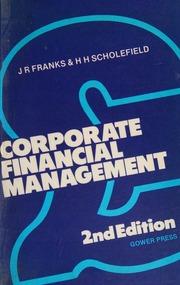Question
Jesper Waxin had always been an avid and an accomplished golfer. As an amateur he had a handicap of 3. Jesper also had a BS
Jesper Waxin had always been an avid and an accomplished golfer. As an amateur he had a handicap of 3. Jesper also had a BS in finance and an MS in computer science. To enjoy his passion year-round, he had moved to Jupiter, FL in 2012 to start Jesper Tech, a company that specialized in indoor golf simulators. Jupiter is the northernmost town in Palm Beach County and is the epicenter of professional golf. Dozens of PGA Tour players make their home in Jupiter. Additionally, Jupiter is the winter home to over 9,000 snowbirds, the temporary residents from the northern states and Canada that come down each winter to escape the frosty winter weather and snow at home. Canadian snowbirds numbered approximately one million statewide.
Jesper Techs indoor golf simulators allowed a player to practice and play simulated rounds of golf in a climate-controlled space that featured a screen, into which the player hit the golf ball, that depicted the various holes of a golf course. Computer programs for several different famous courses could be purchased for use in the simulator. A simulator kept track of the golfers score and displayed several helpful statistics detailing the players performance, e.g., swing speed, ball speed, distance, number of putts. Jesper Tech offered two versions of its simulator, a professional model purchased primarily by golf stores offering golf lessons and a less expensive model that can be installed in the home. Prices ranged from USD4,500 for the least expensive home model to over USD50,000 for the most expensive professional model.
Sales had exceeded Jespers early estimates, and he was happy with his decision to start Jesper Tech. Even though the mild winter weather allowed golf to be played year-round in southern Florida, the simulators were popular because of the diagnostics they provided.
As a result of the favorable feedback, he had received about his simulators, Jesper believed an opportunity existed to expand into Canada where Canadian snowbirds might be interested in having a simulator while at home during the North American summer. He further believed a market could be developed among year-round Canadian residents. The Canadian snowbirds were primarily from Ontario and Quebec, the two largest provinces. After a study of demographics and population growth rates, Jesper concluded that a wholly owned subsidiary in Ottawa would be a logical location to establish operations.
Jesper decided that an NPV analysis needed to be performed to see if expansion into Canada made economic sense. He determined that a physical plant in Ottawa would require an initial outlay in building and equipment of CAD4,600,000. This investment could be depreciated straight line over five years with no assumed salvage value, but Jesper believed it could be sold for CAD375,000 at the end of five years, which would be fully taxable.
Jesper estimated first-year sales of 950 units with an annual growth rate of 8 percent. He used CAD7,800 as the average sales price per unit. He estimated operating costs at 73 percent of gross revenue. He expected both sales revenue and costs to keep pace with inflation. He forecasted long-run inflation in Canada at 2 percent per year and 3 percent in the United States.
He knew he should evaluate the NPV in USD terms, i.e., from the parent firms perspective. But he was uncertain if he should perform the NPV analysis by discounting CAD cashflows at a Canadian cost of capital and then convert the CAD NPV into USDs at the current exchange rate of USD0.7888/CAD or if he should first convert all the forecasted CAD cashflows into USDs at forecasted exchange rates and then discount at a USD equivalent cost of capital. He decided to perform the analysis both ways and determine if the method affected his decision. He planned to estimate future spot USD/CAD exchange rates using purchasing power parity (PPP). He used 8 percent as his USD cost of capital.
The corporate tax rate in Canada is 15 percent and a 5 percent tax on dividends paid to a U.S. parent corporation is withheld, resulting in an effective tax rate of 19.25 percent [= 0.15 + 0.05 (0.15 x 0.05) x 100 percent]. The U.S. corporate tax rate is 21 percent. Since the U.S. follows a territorial tax system, Jesper knew the 19.25 percent rate was the appropriate tax rate for his analysis as no additional tax would be due in the U.S. once dividends were repatriated.
If you were advising Jesper and consider the foreign exchange risk in the analysis, what is the NPV in CAD terms?
Enter your answer as an integer.
The answer is : CAD$
Step by Step Solution
There are 3 Steps involved in it
Step: 1

Get Instant Access to Expert-Tailored Solutions
See step-by-step solutions with expert insights and AI powered tools for academic success
Step: 2

Step: 3

Ace Your Homework with AI
Get the answers you need in no time with our AI-driven, step-by-step assistance
Get Started


